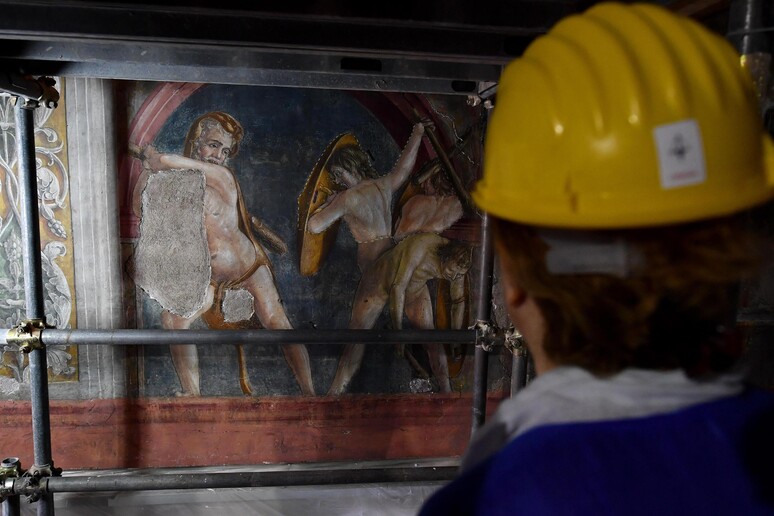Four-month-long restoration work to
bring back to its original splendor the Hercules Room of
15th-century Palazzo Venezia in downtown Rome has kicked off.
The room will be open to the public during the restoration
as of September.
Funded with a donation of 150,000 euros by the Silvano Toti
Foundation, the work will concern the room's wooden ceiling and
frescoes representing some of the 12 labors of Hercules, which
have been attributed by a number of art historians to Italian
Renaissance master Andrea Mantegna.
The renovation will be carried out by L'Officina, a
restoration consortium directed by Paolo Castellani, an art
historian at the Polo Museale Lazio, the State museums of the
region around Rome.
The room is one of the most important and refined at the
palace built by Cardinal Pietro Barbo in the mid-15th century,
shortly before he became Pope Paul III.
The director of the Polo Museale of Lazio, Edith Gabrielli,
told ANSA that museum authorities chose to renovate the room
because it is artistically one of the most valuable and
interesting in Palazzo Venezia.
''We picked this room because it has one of the palace's
most interesting set of frescoes and because it represents a
tassel of Renaissance art in Rome that still needs to be
discovered''.
A refined man and a collector, Pietro Barbo originally used
it as a regalia room.
It is located on the first floor, also called 'piano
nobile' in ancient Italian aristocratic palaces because it was
where the noble owners would live.
The wooden ceiling and top part of the walls feature, among
others, family crests and the representation of some of the 12
labors of Hercules, a series of episodes concerning penance
tasks carried out by the great Greek hero.
Restorers Isabella Righetti and Rita Ciardi told ANSA that
renovation work is urgently needed because of repeated and
heavy-handed work carried out in the past.
They spoke in particular about ''disinfecting the wooden
part of the ceiling and consolidating the plaster and
painting''.
The restorers also said dried pigments used in previous
restoration works hid the artworks' original colors.
''By cleaning them, we hope to rediscover the polish of the
paintings, which were supposed to look like large windows that
were open towards the outside''.
The restorers said they hoped to discover how the room was
originally decorated and, in particular, who worked on the
frescoes.
Art historians have long debated on the artist's identity
and many believe he probably came from northern Italy.
More than one historian has attributed the work to
Mantegna, who was an apprentice of Paduan painter Francesco
Squarcione.
Others have instead attributed the artwork to an anonymous
miniature painter at the pope's court.
Gabrielli said she doesn't believe Mantegna painted the
frescoes.
However, she said the room is of fundamental importance
''to shed light on Roman Renaissance, which has been studied but
not sufficiently examined because it has been partly obscured by
the more famous Florentine Renaissance''.
ALL RIGHTS RESERVED © Copyright ANSA











